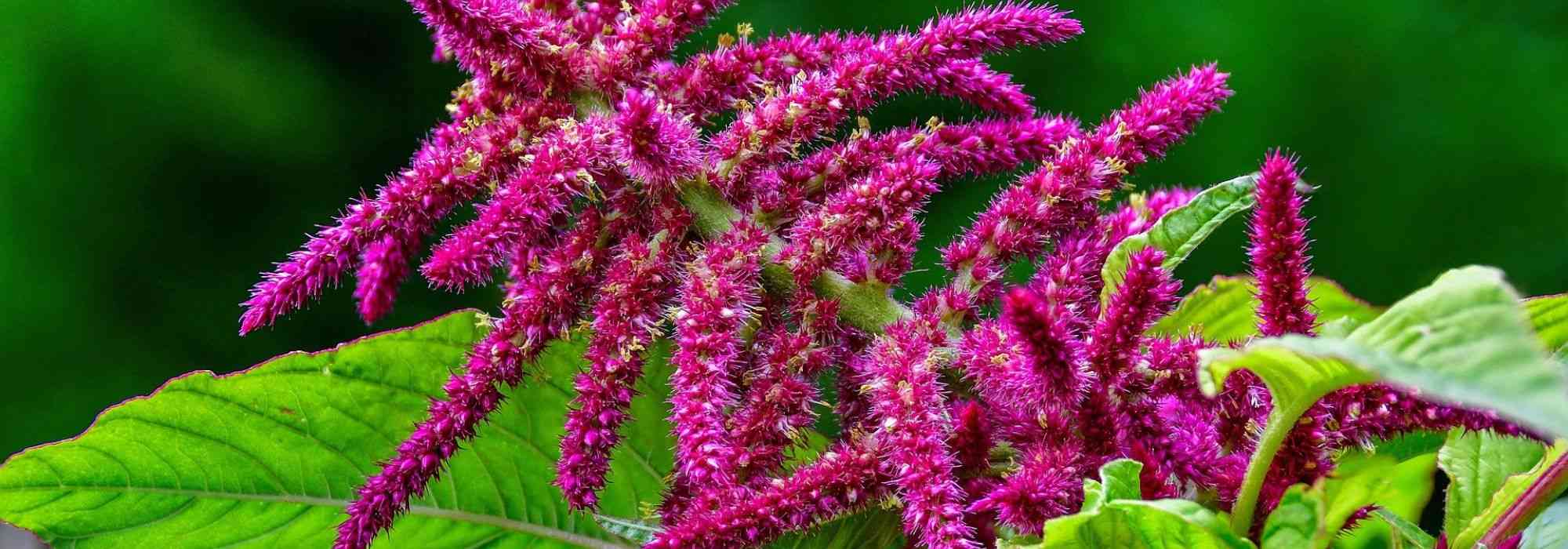
Amaranth : sowing, planting, care
Summary
Amaranth in a nutshell
- Amaranth is an annual plant with often spectacular summer flowering: foxtail amaranth, in particular, displays long erect or trailing plumes showing unusual shades of purplish red, Indian pink or green
- Some Amaranth species have very decorative, variegated foliage
- It is also an edible plant, prized in cooking for its seeds, which can be made into amaranth flour!
- Undemanding, it grows in full sun in any fresh, well-drained soil
- As a single specimen or in small groups, it adds great vertical interest and originality to borders, flowering containers and even summer bouquets
A word from our expert
Amaranth, amaranthus in Latin, is a spectacular annual plant still too little-known… Lofty and theatrical, this tall, cold-sensitive plant unfurls without restraint from summer to autumn, a magnificent flowering in trailing or erect spikes over sumptuous green, purple-tinged or tricolour foliage.
If the best-known is the foxtail amaranth, often sporting a deep purplish-red colour, there are also green varieties, flashy pink or even biscuit-coloured!
Besides its ornamental qualities, Amaranth is also an edible plant with many benefits that lends itself to all sorts of recipes and is prized in cooking for its seeds: popped amaranth is delicious in cereals. Amaranth leaves are also packed with vitamins!
Don’t let its reputation as an invasive plant put you off; amaranth can be easily contained in the garden if you remove its flowers before they set seed.
Discover Amaranth, this large annual plant easy to grow in full sun, and always very eye-catching in a garden, on a terrace or in bouquets!
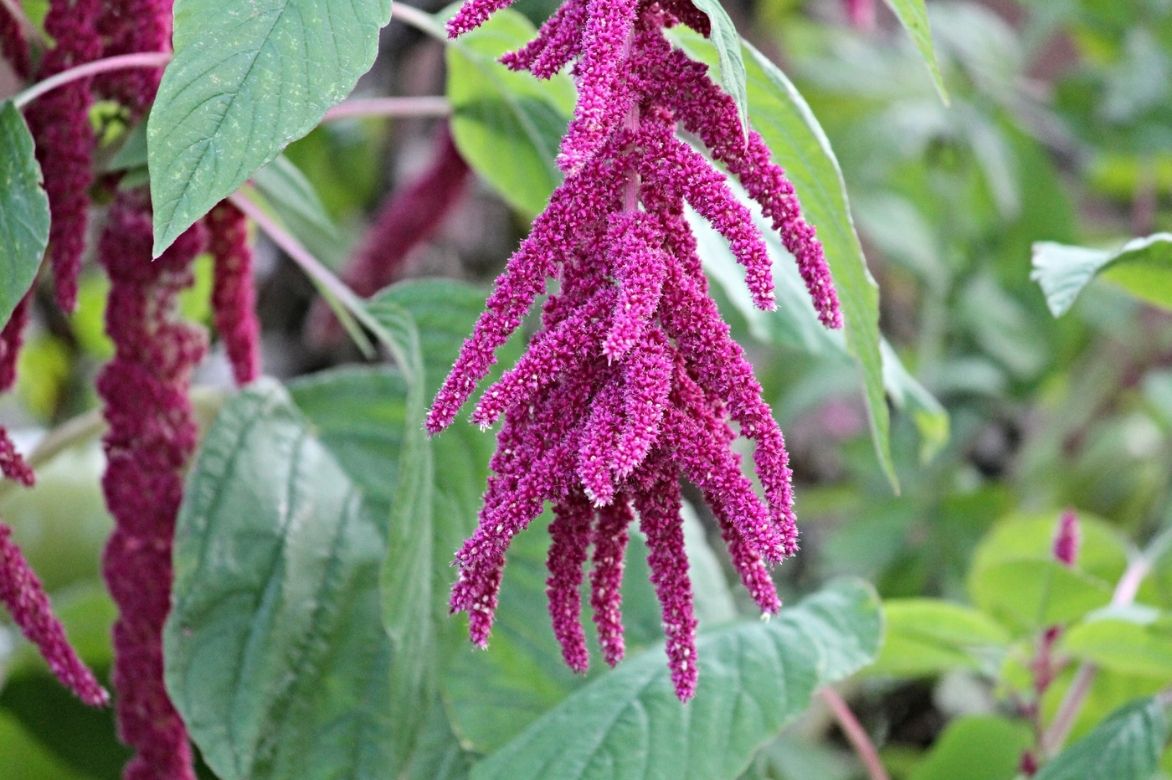
Description and botany
Botanical data sheet
- Latin name Amaranthus
- Family Amaranthaceae
- Common names Amaranth, Foxtail
- Flowering July to October
- Height 0.45 to 2 m
- Sun exposure Sun
- Soil type Fresh, well-drained
- Hardiness frost-tender
Amaranth is a herbaceous plant of the family Amaranthaceae. It is native to South America, where it grows in light, humid woods and where Incas and Mayas cultivated it for its seeds and leaves.
Around sixty species of amaranth are recognised, mostly edible, including Amaranthus caudatus, the famous “foxtail” with cultivars in red‑purple or pistachio green. The tricolour amaranth (Amaranthus tricolor), available in many variegated cultivars (‘Joseph Coat’s’), Amaranthus paniculatus with its large plume-like panicles, and Amaranthus hybridus ssp cruentus or edible amaranth, are also seen in our gardens.
A native of tropical and subtropical climates, this plant is perennial in its natural habitat but cultivated as an annual under our climates.
Amaranth quickly forms a bush, more or less ramified, 90 cm to 2 m tall with erect or trailing habit depending on species. These vigorous clumps can be invasive and some amaranth species that naturalise easily are considered weeds in some areas.
Leaf appearance varies according to species and varieties. Large leaves 3–20 cm long, ovate to lanceolate, sometimes elongated-heart shaped, with veins deeply marked, are arranged in clusters, alternately on thick stems, sometimes midribbed and reddish‑purple. If foliage is deciduous, it renews regularly in some species, notably Amaranthus tricolor, and persists very late into autumn—Amaranthus meaning in Greek “that does not fade”. Leaves of the latter have undulate margins, a puckered appearance and are strongly veined.

Amaranthus caudatus – botanical illustration
Dark green, purplish green with blood-red veins in Amaranthus caudatus or a magnificent grey-tinged purple in Amaranthus cruentus ‘Velvet Curtains’ (also called “blood-coloured amaranth” or “red amaranth”), the foliage can be even more striking in some species. In Amaranthus tricolor it is distinguished by flamboyant, sumptuously variegated or motley colours at the top of the plant, mixing bronze, gold, vanilla, orange and red. Rich hues contrast with the plant’s green base. These very colourful, tousled tufts give some amaranths an appearance of tropical parrots or a bush ablaze—magnificence that largely compensates for the modest flowering in this species.
This colourful growth remains attractive until first frosts. It provides a setting for spectacular inflorescences of certain amaranth species. Theatrical, the erect or trailing flowering of amaranths is one not easily forgotten! Flowering lasts from July to September/October and therefore brings a very original touch to the garden.
Most striking of all is Amaranthus caudatus. This species produces, depending on the variety, long erect and tapered or drooping panicles that can measure up to 40 cm or more, sometimes touching the ground. Its common name “foxtail” comes from its tiny simple, petal-less flowers, surrounded by coloured bracts and gathered in cylindrical spikes in the leaf axil or at the terminal part. Dense and velvety, these aments resemble the animal’s tail.
Some varieties, such as Amaranthus caudatus gibbosus or Amaranthe gibbeuse, produce a quite unique flowering in the plant world with their drooping spikes made up of knobbly balls reminiscent of certain Jamaican dreadlocks! Others, like the variety ‘Fat Spike’, are notable for erect inflorescences instead of drooping ones.
All transform the bush into a cascade of downy flowers.
As for paniculate amaranths (Amaranthus hypochondriacus, Amaranthus paniculatus), they display large, fine, dishevelled plume-like panicles about 25 cm long.
These floral spikes, with surprising character, bear rich colours, sometimes as striking as one could imagine for a plant, ranging from deep purple to crimson, burgundy red to Tyrian pink (Amaranthus cruentus ‘Velvet Curtains’), not forgetting the pistachio green of ‘Green Cascad’ or the biscuit tones of ‘Autumn Palette’.
They also make excellent flowers for grand bouquets, fresh or dried as their colours do not fade, even when dried.
After flowering, the plant fruits generously: each plant produces thousands of seeds per year! Fruits are achenes containing very numerous tiny seeds dispersed by wind and rain, quick to self-sow.
Amaranth is a tender plant grown as an annual under our climates. Its South American origins mean it prefers sunny, wind‑sheltered exposure as it needs warmth. It grows quickly in well-drained, rich, fresh soil. Tolerant of sea spray, it is also a good plant for coastal situations.
Particularly remarkable for the luminous or incandescent display it offers all summer into autumn, Amaranth never goes unnoticed in a garden. It is a must for sun gardens. With its strong presence, it composes lush, exuberant summer scenes and asserts itself in a romantic garden as well as an exotic one! Plant it almost anywhere, singly or in small groups to bring colour, originality and verticality to a well-exposed perennial border or in a flowering container. Edible, it is also perfect in a flowering vegetable garden.
Young amaranth shoots are eaten like spinach while its seeds are enjoyed whole, toasted or ground into flour like a cereal.
You may also read
How to sow annual seeds: directly in the ground or in trays?Main species and varieties of amaranth
Giant forms reaching nearly 2 m or ones no more than 40 cm tall, flowering upright skywards or trailing spikes down to the ground, colours flamboyant or discreet, many species and varieties of amaranths suited to every garden. From most exuberant to most restrained, discover our amaranths, some offered exclusively!
Most popular
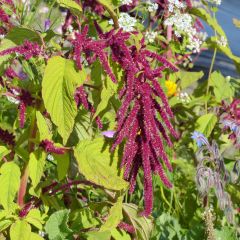
Amaranthus caudatus Red Cascade Seeds - Love-Lies-Bleeding
- Flowering time august to october
- Height at maturity 1 m
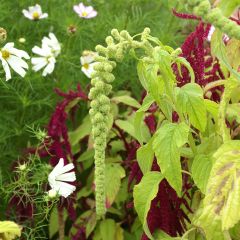
Amaranthus caudatus Pony Tails Mixed - Love-Lies-Bleeding
- Flowering time september to november
- Height at maturity 1,10 m
Our favourites
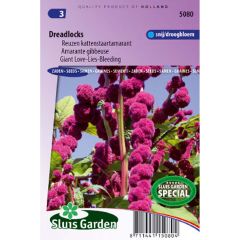
Amaranthus caudatus Dreadlocks Seeds - Love-Lies-Bleeding
- Flowering time august to october
- Height at maturity 80 cm
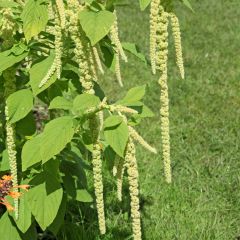
Amaranthus caudatus Green Cascade Seeds - Love-Lies-Bleeding
- Flowering time august to october
- Height at maturity 1 m
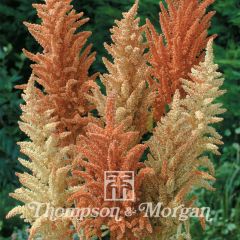
Amaranthus paniculatus Autumn Palette - Amaranth
- Flowering time september to november
- Height at maturity 1,05 m
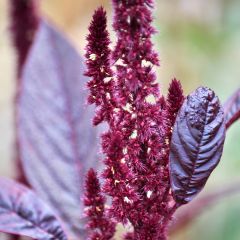
Amaranthus cruentus Velvet Curtains Seeds
- Flowering time august to october
- Height at maturity 1,20 m
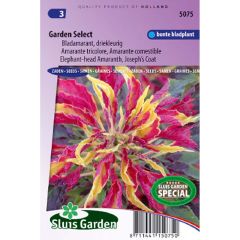
Amaranthus tricolor Garden Select Seeds - Josephs Coat
- Flowering time august to october
- Height at maturity 40 cm
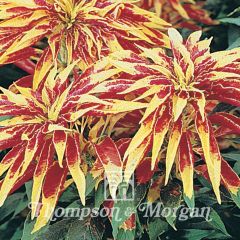
Amaranthus tricolor Joseph's Coat - Amaranth
- Flowering time september, october
- Height at maturity 60 cm
Discover other Amaranthus
View All →Sowing amaranth seeds, planting
When to sow and plant Amaranth or foxtail amaranth?
Amaranth seeds are sown under cover from March at a temperature of 15 to 20°C, with pricking out in May once all risk of frost has passed, or sown directly outdoors in April–May, preferably after frosts.
How to sow Amaranth seeds?
Sowing under cover
- In a seed tray, sow very thinly on surface of a good, moist potting compost or place 1–2 seeds directly per bucket
- Cover Amaranth seeds lightly with compost
- Keep in light in a warm place between 20 and 25°C
- Keep surface moist but not waterlogged until germination; this usually takes 3 to 15 days
- Prick out young plants into buckets
- In mid-May, after any risk of frost has passed, plant out into ground or into pots
- Add compost to each planting hole
- Water thoroughly
Direct sowing in open ground
- In well-worked soil, enriched with compost and loosened to 40–50 cm, sow Amaranth seeds very thinly in furrows 30 cm apart
- Keep soil moist to aid germination
- When seedlings reach five leaves, thin out and transplant young plants, spacing each 40–80 cm
- Water very regularly
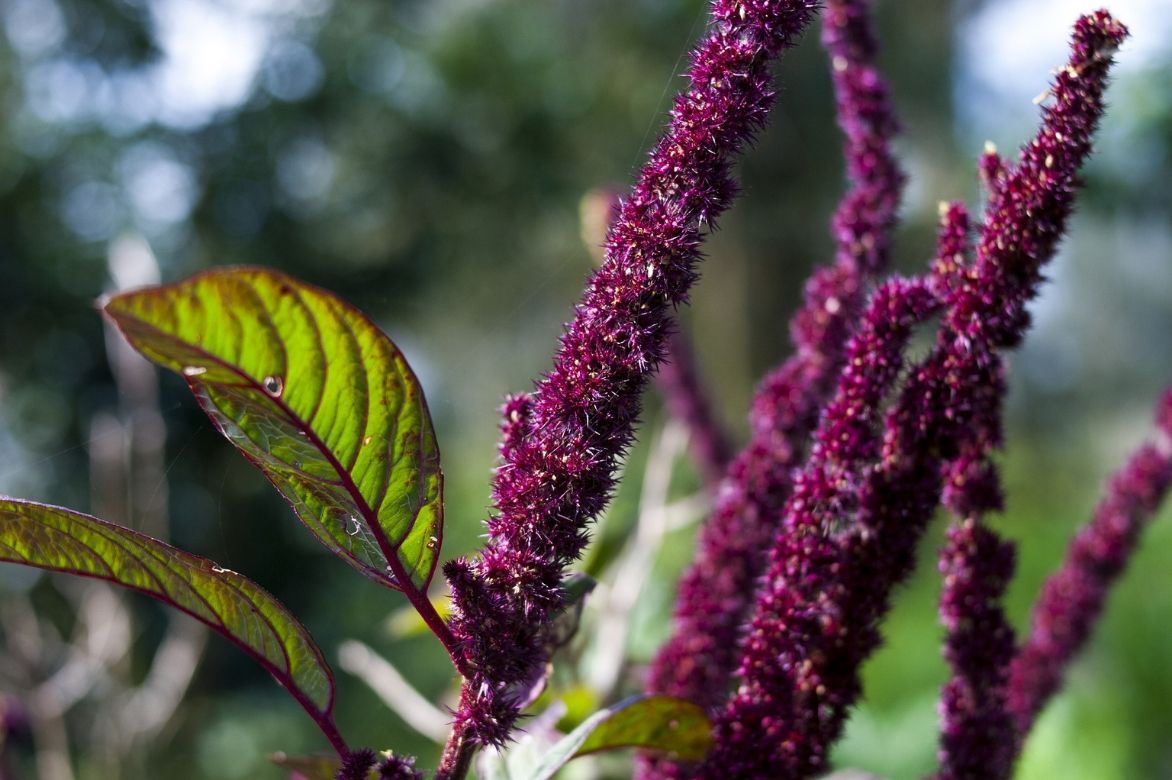
Where to plant Amaranth?
Amaranth is a frost‑tender perennial, so in our climates it is grown as an annual in open ground or in pots. It can be overwintered in frost‑free conditions. It tolerates sea spray well.
It is a heat‑loving plant that requires a sunny position, in a spot sheltered from strong winds. Too windy a situation will be a threat for this large annual.
It prefers fertile, cool, very well‑drained soil in which it grows rapidly and becomes luxuriant.
For a spectacular effect, plant amaranths in groups of 3 to 5 plants per m2, spaced 50 to 80 cm apart depending on varieties.
Its bushy habit and sometimes imposing height (it can reach 2 m) make it easy to integrate in centre or back of a perennial or annual border, in a flowerbed or even alone against a wall or fence in a warm spot where it will attract attention. It will also provide verticality and flamboyance at edge of a pond or in sunny, damp areas of the garden. It is also easily grown in a large container on terraces.
Planting Amaranth in a pot
If you wish to grow Amaranth in a pot, choose a large container and transplant your young plant into a mix of potting compost and compost kept moist. Spread a good draining layer at bottom of pot. Mulch and water very regularly, never allowing growing medium to dry out.
You may also read
How to sow Good King Henry?Care and maintenance
Once well established, Amaranth proves to be a trouble-free annual plant, provided soil remains moist and sufficiently fertile.
In pots or in open ground, soil must be kept moist: apply mulch and water regularly, especially during dry spells.
In pots: fertilise with a liquid feed every 15 days during flowering.
Stake very tall varieties from the start of growth if necessary.
When they are 4 to 6 weeks old, young leaves can be harvested.
Remove spent flowers to encourage a second flowering or leave them to set seed if you wish to harvest seeds for future sowing. Amaranth seeds are harvested in late summer: cut spikes and dry them; when thoroughly dry, thresh them to collect seeds.
In autumn, pull up plants to avoid self-seeding: Amaranth self-seeds freely and abundantly! You can overwinter potted specimens in frost-free conditions.
Possible diseases and pests
Amaranth has two well-known enemies:
-
snails and slugs that devour young shoots: discover our tips to protect your plants from gastropods!
-
aphids: plant decoy plants nearby, such as nasturtiums, and spray soapy water regularly.
Multiplication
Amaranth self-seeds spontaneously. Amaranth seeds retain their viability for up to 3 years after harvest. Plant reproduces by sowing in spring, if you haven’t cut all the flower stalks.
Discover: our guidance video to help you sow your annual seeds successfully!
Companion planting with amaranths in the garden
By its theatrical, exuberant flowering and its purple or tricolour foliage in fiery shades, Amaranth always makes a striking entrance in the garden, transforming a simple border or flower bed into a breathtaking display of originality. Depending on colour of its spikes, it fits into any setting, from the most romantic to the most exotic. It is an unmissable annual flower for sunny gardens and, of course, for pink and mauve gardens.
With its strong presence, Amaranth can set the tone for a border, either by bringing contrast and cheerfulness or by creating a harmonious colour scheme.
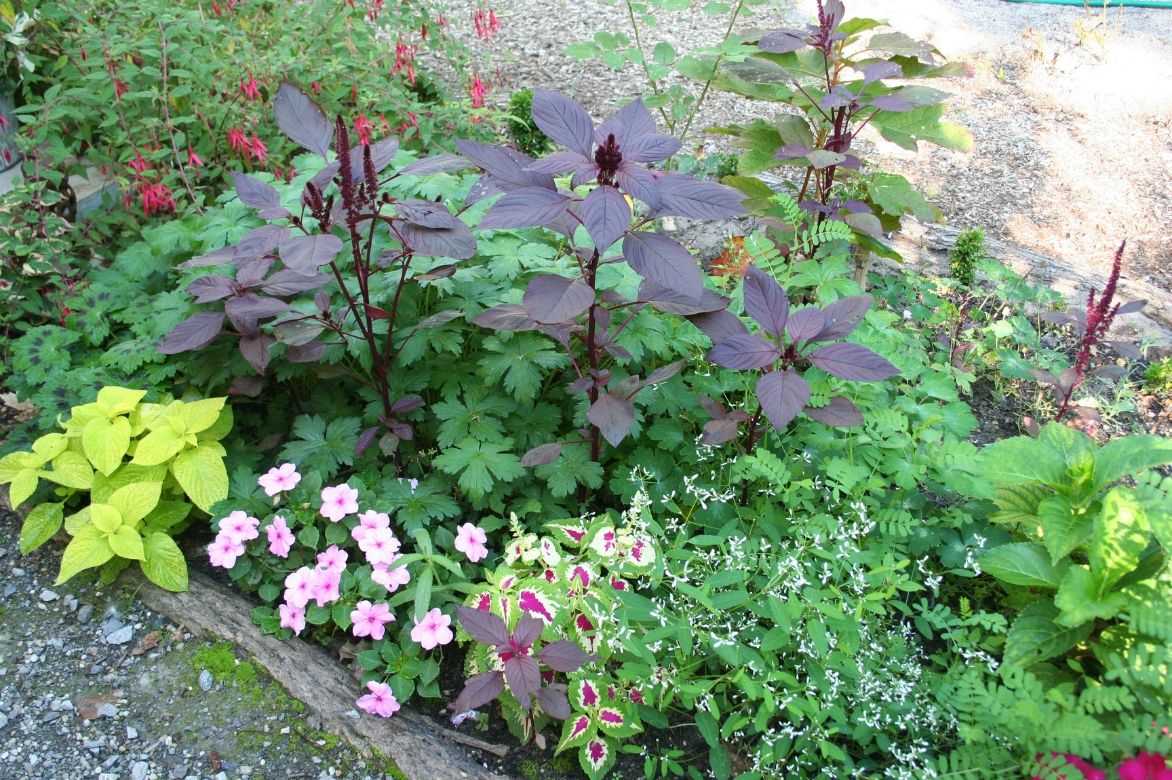
An example of a pairing: Euphorbia ‘Diamond Frost’, Amaranth such as ‘Velvet Curtains’, Impatiens such as ‘Orchid Blush’, Fuchsia magellanica and Coleus variety ‘Skyfire’ would be perfect.
Opt for monochromy by mixing pinks for a voluptuous setting. Saturated colours suit the late season well: dare to pair strong tones by placing foxtail amaranths near bushes with purple or dark foliage, such as a purple smoke tree, heritage roses, Phlox paniculata, hollyhocks or large lavateras.
A few Amaranth plants are enough to add depth and character to a simple flower bed and to compose exotic, colourful scenes.
In a mixed border, it is easily paired with late-flowering perennials such as asters, giant snapdragons, heleniums, autumn sedums with which it creates flamboyant displays to accompany summer’s last glow.
At centre stage in an exuberant border, it will find a perfect place alongside floriferous, radiant perennials such as daylilies, Echinacea, crocosmias, agastaches, oriental poppies, lupins, cardoons and annuals such as cosmos and red flax.
For a dazzling match, pair dahlias with amaranths for even greater impact.
Mix them with annuals such as rudbeckias, zinnias, sunflowers, which will compete with amaranths for the most vibrant tones.
To keep soil cool at its base all summer, plant ground-cover perennials such as Cerastostigma plumbaginoides or leadwort, creeping bugles or lamb’s ears with wooly silvery-grey foliage.
For a contemporary tableau with an exotic touch, foxtail amaranths will set the garden alight until early autumn when paired with a castor bean, kniphofias and linear leaves of a New Zealand flax.
Amaranth always introduces bold accents into a composition that straw-coloured grasses such as Pennisetum or fountain grass, Miscanthus and Stipa pennata help to balance by adding texture, movement and lightness.
In containers, Amaranth goes well with lobelias, ornamental tobaccos, petunias and calibrachoas and mini-dahlias.
Amaranth is also essential alongside other vegetable plants. It will form a splendid backdrop to a border of marigolds, red oraches and dwarf nasturtiums, which will also help keep aphids off its stems!
Did you know?
Long before it filled the shelves of organic shops and our gardens, amaranth was cultivated by the Aztecs who ate it as a cereal, like quinoa, and used it in sacred rituals.
Useful resources
- Discover our collection of amaranth seeds
- Don’t miss your sowings of annual seed thanks to our advice sheet
- Discover Christine’s article on plume-like inflorescences
- Gwenaëlle explains how to harvest and use amaranth in cooking.
- Subscribe!
- Contents
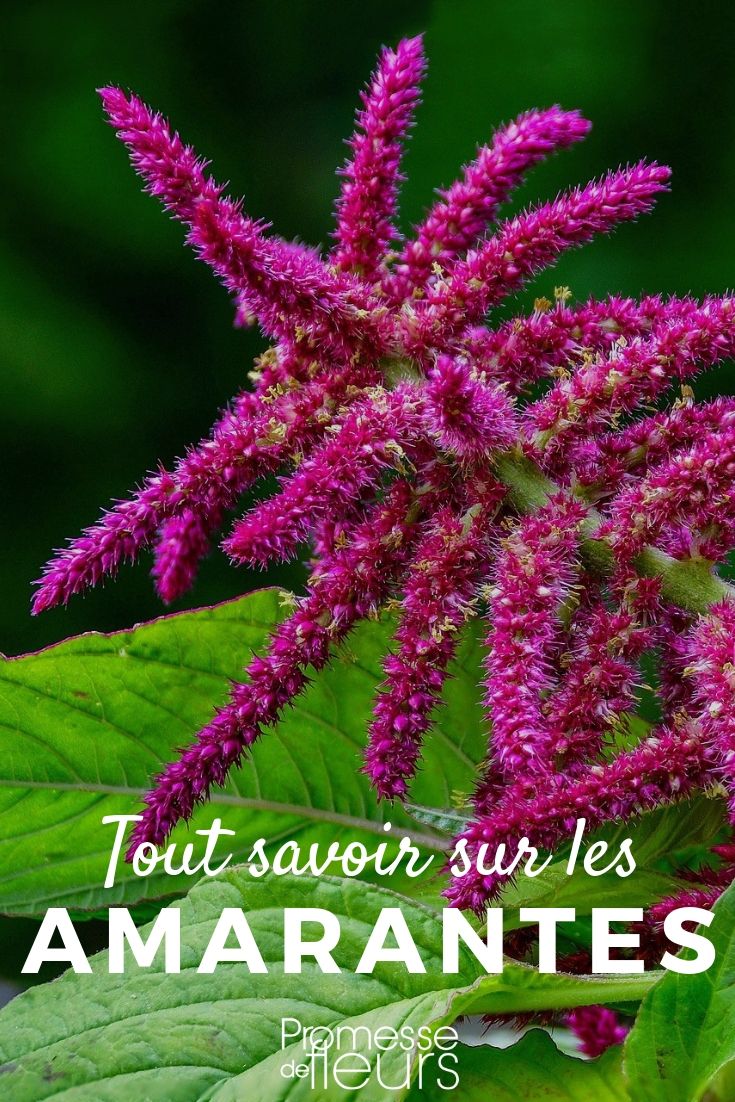
































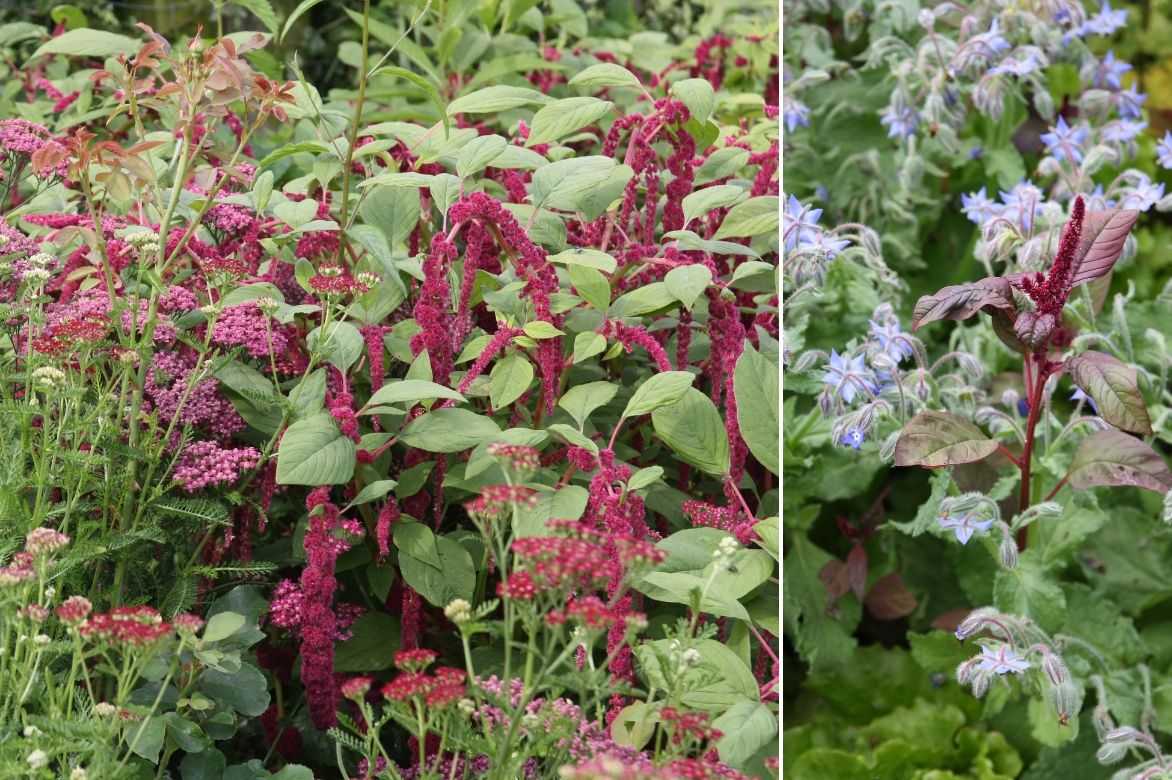
Feedbacks